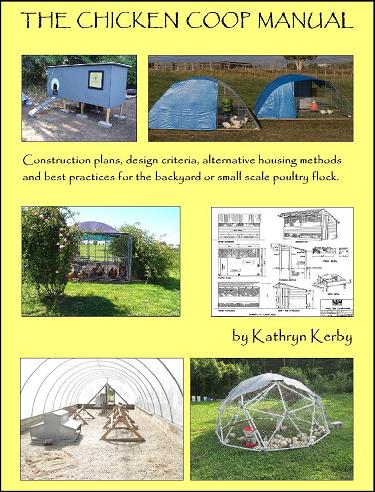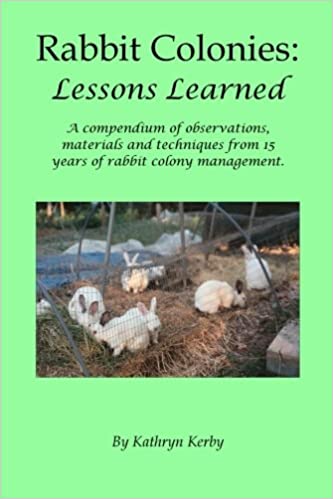Horses & Oxen:
The original form of American horsepower
Farms of all sizes need power. Sometimes, just a little. Sometimes, quite a lot. That power has taken many forms over the passage of time - manpower, animal power, machine power, each with their own advantages and disadvantages. We use all three forms of power on the farm, but we are most excited about, and steadily building on,the use of animal power. Perhaps that seems odd, even counter-productive, here at the dawn of the 21st century. But animal. power offers some advantages that go wanting with the other two possibilities.
Advantages
Animal power isn't just for primitive societies or colonial re-enactment farms. It can be a cost effective source of energy for any small farm, particularly those farms that already keep animals for other purposes.
* Home Grown power. Animal power, whether it be small animals such as dogs or goats, medium animals such as ponies and horses, or large animals such as oxen and cows, can all be created and maintained within a diversified farm environment. No going to a dealership or waiting on the next cargo shipment for your power source. And no worries that your favorite engine will no longer be available. You can create your own power source, geared for whatever size of operation you have.
* Home Grown Fuel. Energy has always been a limiting facator for so much of a farm's activities. Considerable amounts of energy are needed to till, plant, cultivate, and harvest any kind of crop. The cost of that energy makes a huge impact not only in terms of a farm's profitability, but also its sustainability. Relying on off-farm energy, let alone foreign energy sources, means that every year is a gamble. Providing that energy from home resources is a very powerful way to reduce not only farm costs, but also production uncertainties.
* Home Grown Fertilizer. One of the farm's most costly inputs is fertilizer, particularly nitrogen. Buying in that nitrogen can be staggeringly expensivee on a per-acre basis, particularly when compared to produce prices that barely cover other production costs. Creating that fertilizer at home can not only reduce costs, but organic nitrogen sources can improve soil tilth and microbial vitality.
* Closed Circle production. Many farms have discovered, as we have, that making the most money per year is not necessarily the goal. If we make a huge amount of money but spend even more money during the year, we cannot claim to be anything close to profitable, let alone sustainable. If, on the other hand, we can provide for most of our own production needs, then our earnings requirements can be much lower, while still providing a good net income. Home grown power sources go a long way towards making that happen.
Disadvantages
While animal power does offer some potent advantages on the small farm, draft animals also have some drawbacks which must be carefully considered:
* Animal housing and fodder production both require investment in additional equipment, outbuildings and diversion of cropland from market crops. On some farms where space is limited, that can become a problem. Space-saving crop production methods can help reduce that requirement but not eliminated.
* Animals require daily care which can impact family work schedules. Vacation schedules or off-farm travel for business or emergency purposes can also be complicated with animals on the farm. If a farm is already involved in animal production, the additional animal needs are negligible. But if a farm is predominantly plant-production oriented, those draft animals become a complicating factor.
* As the world becomes more urban, more farms find themselves surrounded by housing developments which do not tolerate common draft animals. Many municipalities still allow horses but do not allow cattle. Some rural areas even have covenants against smaller animals like goats or more than one or two small dogs. Those zoning conditions can make animal presence either impossible, or terribly inconvenient for the small farm owner.
* True sustainable production requires that each unit be self-replacing. That means a farmer either needs to maintain breeding facilities for each animal species, or have immediate access to nearby replacement stock. Sustainable production also requires that equipment and power supplies be maintained as much as possible on the farm. If a farmer has no knowledge of, or interest in, animal husbandry knowledge, that maintenance quickly becomes expensive or impractical.
Real World Applications
Any business venture, any lifestyle approach, needs a careful consideration of such fundamental features. For some farms, animal power might not work out well. But many farms would do very well to supplement or replace their mechanized power sources with home-grown animal power, particularly where animals are already raised. The cost savings can be dramatic if the right features are already in place, or could be easily added.
Another aspect to consider is the idea of keeping alive old but valuable methods and practices. In the age of peak oil and offshore manufacturing, home grown power can be a very satisfying option for energy-hungry farming activities.
Our Experiences
We have been studying draft animal power for many years, and we have used draft animals on other farms. But we are just beginning to use animal power on our own farm. As with anything else, this new discipline requires a lot of learning, a lot of practice, and a lot of careful thought to ensure the best use of this approach. Even after we start using animal power here, we'll spend years refining our methods. We'll track that experience here as we go.
Lippitt Morgan Draft Horses
We have recently aquired three
Morgan horses which we are training to be used for a wide range of uses - draft power, logging work and riding. We are probably several years away from having them ready to work in the fields or in the woods, but check back here for updates.
Milking Shorthorn Oxen
We were thrilled with the delivery of our female calf Hope in 2007, but her fate is to become a dairy cow and serve the farm in these ways . We look forward to the future arrival of male calves who will serve as oxen in the years to come. Check back here for updates as our cows give us more calves in the future.
Animal Power Books
We have only had our cattle and horses for a relatively short time, but we've been studying animal power for many years. Many folks are under the impression that this is a dying art, but I'm happy to say it is enjoying quite a revival, for fun, and for practical purposes.
We share these links with you hoping that whatever your questions, you'll be able to find your answers amongst these resources. We have used and enjoyed all of them in various ways. Some of the websites offer an amazing amount of information about either oxen or horse power, or both. And a lot of these folks are just plain nice to work with.
Whatever your interest in draft power, we hope you enjoy these selections. We have found them invaluable.
Draft Horse Books
Work Horse Handbook, by Lynn Miller
This wonderful book was one of our first introductions to using work horses competently, profitably and respectfully. The partnership between horse and human being is thousands of years old, and perhaps nowhere else has this partership reached a higher practical purpose than with draft work. A well managed draft team is both powerful and beautiful, but there is a considerable amount to learn before trying to use these animals competently. We highly recommend this book as one of the best sources of that information.
Draft Horse Primer, by Maurice Telleen
This was one of my first books about draft horses, and what a lucky thing for me. Simultaneously comprehensive in its coverage and beautifully respectful in its assessment of what draft horses can bring to farms, forests and communities. This book was one of the first places I ever saw references to putting the "culture" back into "agriculture", with a variety of poems and artwork to suggest that draft horses are so much more than mere beasts of burden. They are partners, teachers, and friends to those of us lucky enough to cultivate such relationships. A beautiful and competent treatment of all things draft horse related.
The Working Horse Manual, edited by Diana Zeuner
It's one thing to get one person's opinion on a topic they love. It's a whole different thing to read through a collection of experts on a topic they all cherish. This book is just such a collection, on draft horse methods, equipment, handling, training and breeding. The world of the work horse has been blessed with so many talented teamsters. This book offers the chance to listen to all of them speak about those topics they know so well.
Farming With Horses, by Steve Bowers and Marlen Steward
While there are many uses for draft horses in both city and rural life, the topic of farming with horses is its own extensive specialty. The tools, harnessing, draft loads, and efficient use on the land are all topics worthy of extensive coverage. This book offers that coverage. If you've already looked through more general texts and/or you have basic draft horse experience, but are looking for more specific farming information, this book is for you.
Oxen Books
Oxen: A Teamster's Guide, by Drew Conroy
Drew Conroy is widely acknowledged as one of the modern authorities on raising, training and using draft horses. He trained his first team as a young boy, in the tradition of farm families everywhere, and he has traveled the world gathering information on how cultures everywhere have used this powerful and cooperative species. While draft horses have gotten much of the media attention in recent years, oxen have many advantages over draft horses and have earned just as important a role on animal-powered farms, ranches and woodlots. A thorough treatment of a noble history and a promising future.
In Praise Of Oxen, by Francis Anderson
There's days when we want information about some aspect of a topic, and then there's days when we just want to look at gorgeous photos of a day in the life of that topic. This book offers some of the former but plentiful examples of the latter. The author and photographer toured a modern-day Canadian province where oxen are still in common use, not because the residents must use them, but because the residents choose to use them. The oxen team and handler have been an enduring part of this community for many decades, and that relationship is still alive and healthy today. If you've ever wanted to see a living example of all the ways this noble animal can be profitably used, for business or pleasure, this book offers plentiful, delicious images of both. Highly recommended.
Our Successful Farming and Ranching Books

We released our very first self-published book. The Chicken Coop Manual in 2014. It is a full color guide to conventional and alternative poultry housing options, including 8 conventional stud construction plans, 12 alternative housing methods, and almost 20 different design features. This book is available on Amazon.com and as a PDF download. Please visit The Chicken Coop Manual page for more information.

Rabbit Colonies: Lessons Learned
We started with rabbits in 2002, and we've been experimenting with colony management ever since. Fast forward to 2017, when I decided to write another book, this time about colony management. The book is chock-full of practical information, and is available from both Amazon and as a PDF download. Please visit the Rabbit Colonies page for more information.
The Pastured Pig Handbook
We are currently working on our next self-published book: The Pastured Pig Handbook. This particular book addresses a profitable, popular and successful hog management approach which sadly is not yet well documented. Our handbook, will cover all the various issues involved with pastured hog management, including case studies of numerous current pastured pig operations. If you have any questions about this book, please Contact Us.

Weblog Archives
We published a farm blog between January 2011 and April 2012. We reluctantly ceased writing them due to time constraints, and we hope to begin writing them again someday. In the meantime, we offer a Weblog Archive so that readers can access past blog articles at any time.
If and when we return to writing blogs, we'll post that news here. Until then, happy reading!




